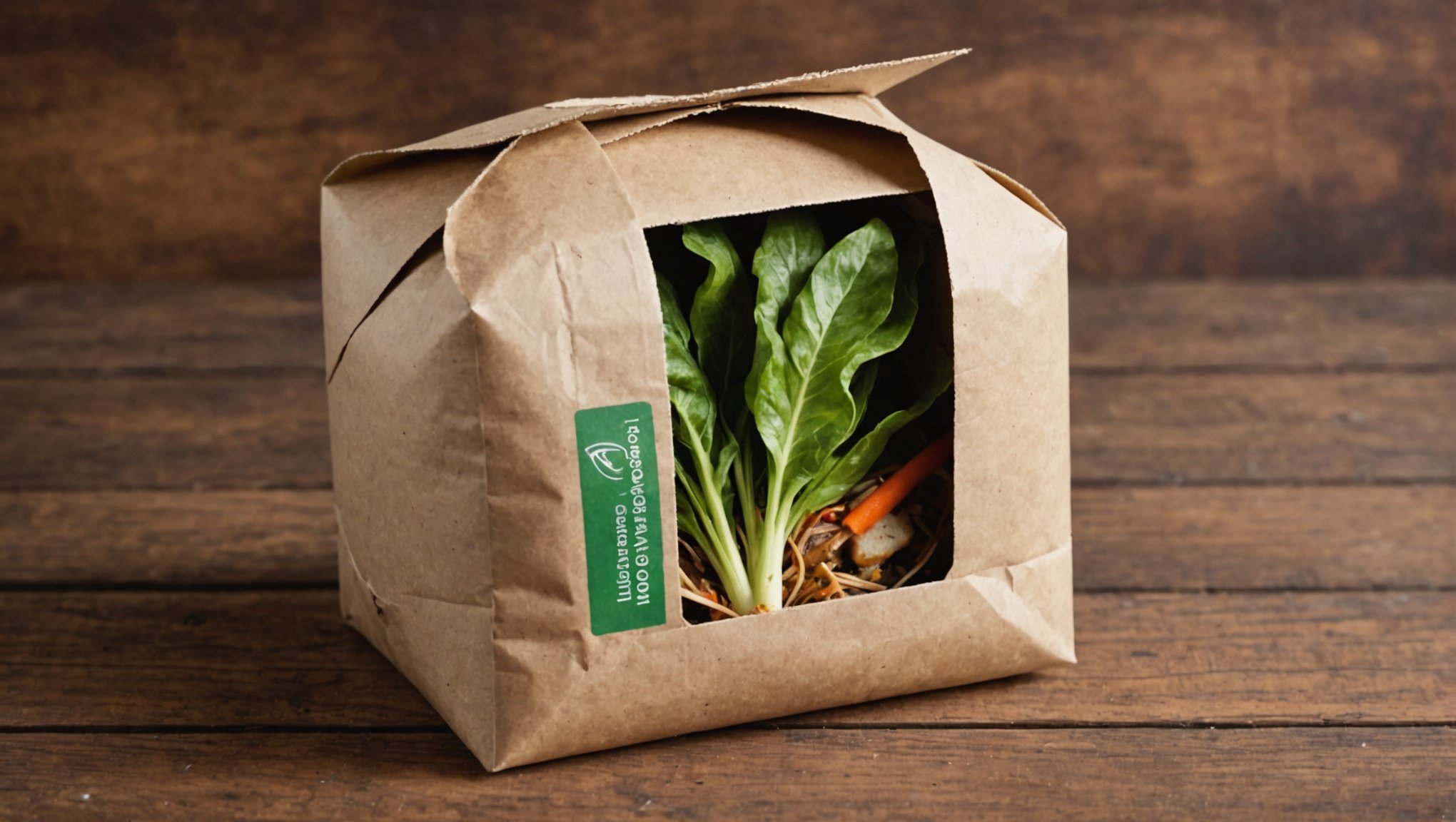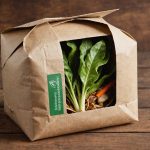Uncovering the Benefits of Compostable Packaging for Restaurants: Embracing Sustainability in Dining
In the ever-evolving restaurant industry, the shift towards sustainability is no longer a trend, but a necessity. One of the most significant areas where restaurants can make a substantial impact is in their packaging choices. Compostable packaging has emerged as a game-changer, offering numerous benefits that align with the growing demand for eco-friendly practices. Here’s a deep dive into why compostable packaging is a must-consider for restaurants aiming to embrace sustainable dining.
The Importance of Sustainable Packaging in the Restaurant Industry
The restaurant industry is facing a critical moment where consumer expectations are driving a significant change. With the rise of environmental consciousness, customers are increasingly seeking out restaurants that prioritize sustainability. Traditional plastic containers and non-recyclable materials are no longer acceptable, and the demand for sustainable packaging solutions is on the rise.
Have you seen this : Ultimate guide to preserving ice cream freshness: pro tips to avoid freezer burn in your dessert bar
“Sustainability has become more than just a buzzword—it’s become a necessity. As consumers prioritize environmental responsibility, restaurants and pizzerias must adapt to meet these expectations,” notes an article from Pizza Marketplace.
Benefits of Compostable Packaging
Compostable packaging offers a multitude of benefits that make it an attractive option for restaurants looking to reduce their environmental impact.
Have you seen this : Top inventory management techniques for streamlining operations in high-volume restaurants
Reduced Waste and Environmental Impact
Compostable packaging is made from biodegradable materials such as plant-based plastics, paper, and even edible packaging. These materials reduce waste significantly by degenerating naturally within a few days, unlike traditional plastics that take centuries to decompose.
“Biodegradable and compostable materials are leading the way. These alternatives not only reduce waste but also align with many of your consumer values, helping foster brand loyalty,” explains Pizza Marketplace.
Cost-Effectiveness
Contrary to popular belief, compostable packaging can be cost-effective. These materials are often cheaper than traditional metal products and can be bought in bulk at a discount. Additionally, they do not require extensive maintenance or cleaning services, reducing associated labor costs.
Healthier Food Options
Compostable packaging also contributes to healthier food options. By minimizing the use of plastics, the exposure to plastic chemicals when eating hot food is reduced, protecting both student health and the environment.
Practical Implementation of Compostable Packaging
Implementing compostable packaging in restaurants involves several key steps and considerations.
Choosing the Right Materials
Restaurants can opt for a variety of compostable materials such as bagasse clamshell containers, compostable drinking cups, and sustainable trays. These alternatives are made from renewable materials like sugarcane pulp and plant-based plastics.
“For instance, Sumkoka’s heatproof catering containers and bagasse cutlery are excellent options for restaurants looking to make a sustainable switch,” suggests Sumkoka.
Waste Management and Composting Programs
Effective waste management is crucial for the successful adoption of compostable packaging. Restaurants need to set up comprehensive recycling and composting programs. This includes training staff on proper waste segregation to ensure that compostables are sorted correctly.
“Setting up comprehensive recycling and composting programs can significantly reduce the amount of waste sent to landfills. Composting food scraps and organic waste can create valuable compost that enriches soil and supports local agriculture,” advises KwickPOS.
Best Practices for Sustainable Packaging in Restaurants
Here are some best practices that restaurants can follow to embrace sustainable packaging:
- Use Sustainable Food Packaging:
- Biodegradable: Created with plants or plant wastes, these packages degenerate within a few days.
- Reusable: Made of materials like bamboo, glass, or wood, these can be used multiple times.
- Recyclable: Sent to recycling centers to be transformed into new products after use.
- Optimize Delivery Operations:
- Implement route optimization technology to reduce fuel consumption and lower carbon emissions.
- Consider using electric or hybrid delivery vehicles, or even e-bikes for short-distance deliveries.
- Educate Customers:
- Include information about sustainable practices on the website, social media, or directly on the packaging.
- Encourage customers to bring their own containers for takeout and leftovers, reducing the need for disposable packaging.
Comparative Analysis of Packaging Materials
Here is a comparative table highlighting the key differences between traditional packaging materials and compostable alternatives:
| Packaging Material | Traditional Plastic | Biodegradable | Compostable | Reusable |
|---|---|---|---|---|
| Material Source | Petroleum-based | Plant-based | Organic waste | Natural materials (bamboo, glass) |
| Degradation Time | Centuries | Few days to weeks | Few days to weeks | N/A |
| Environmental Impact | High pollution, waste | Low pollution, waste reduction | Low pollution, waste reduction | Minimal waste |
| Cost | Generally cheaper | Can be cost-effective in bulk | Can be cost-effective in bulk | Higher initial cost, long-term savings |
| Health Impact | Exposure to plastic chemicals | No exposure to harmful chemicals | No exposure to harmful chemicals | No exposure to harmful chemicals |
| Customer Perception | Negative due to environmental concerns | Positive due to eco-friendly image | Positive due to eco-friendly image | Positive due to eco-friendly image |
Case Studies and Success Stories
Several restaurants and institutions have successfully transitioned to compostable packaging, showcasing the feasibility and benefits of this approach.
- School Cafeterias:
- Schools have seen significant reductions in waste by adopting compostable food packaging and cutlery. For example, using bagasse clamshell containers and compostable drinking cups has not only reduced plastic waste but also provided healthier meal options.
- Restaurant Chains:
- Some forward-thinking restaurants have integrated compostable packaging into their operations, enhancing their brand reputation and attracting environmentally conscious customers. By opting for pizza boxes made from recycled cardboard and using compostable utensils and cups, these restaurants demonstrate their commitment to sustainability.
Overcoming Challenges and Limitations
While compostable packaging offers numerous benefits, there are also some challenges and limitations to consider.
- Higher Raw Material Costs:
- The prices of raw materials like paper, wood, and corrugated boxes can fluctuate, affecting profit margins. However, long-term savings through reduced waste and lower labor costs can offset these initial higher costs.
- Limited Durability:
- Compostable packaging may not withstand temperature changes as robustly as traditional materials. However, advancements in technology are continually improving the durability and functionality of these materials.
Embracing compostable packaging is a crucial step towards sustainable dining in the restaurant industry. By reducing waste, minimizing environmental impact, and offering cost-effective solutions, compostable packaging aligns perfectly with the growing demand for eco-friendly practices.
“Sustainability is a collaborative effort, and educating customers about your eco-friendly initiatives can make a significant impact. Many customers appreciate transparency and are more likely to support businesses that share their environmental values,” emphasizes Pizza Marketplace.
As the restaurant industry continues to evolve, adopting sustainable packaging and practices is not just good for the planet; it’s also good for business. By choosing compostable packaging, restaurants can enhance their brand reputation, attract environmentally conscious customers, and contribute to a more sustainable future.
Practical Advice for Restaurants
If you’re considering a switch to compostable packaging, here are some practical tips to get you started:
- Conduct a Waste Audit: Understand your current waste output to identify areas for improvement.
- Choose the Right Suppliers: Look for suppliers that offer high-quality, cost-effective compostable materials.
- Train Your Staff: Ensure that your staff is well-trained in proper waste segregation and composting practices.
- Educate Your Customers: Transparency about your sustainable practices can foster a positive eco-friendly brand image.
- Monitor and Evaluate: Continuously monitor and evaluate your sustainable practices to ensure they are meeting your environmental and business goals.
By taking these steps, you can join the movement towards a more sustainable restaurant industry, one that not only benefits the environment but also enhances your business’s reputation and operational efficiency.












